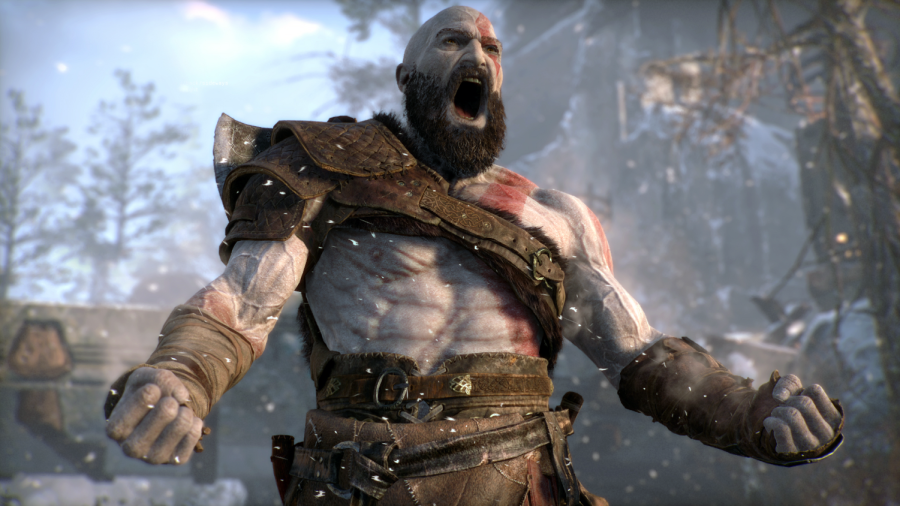‘God of War: Ragnarok’ achieves godly status
Santa Monica Studios’ “God of War: Ragnarok” is the follow up to “God of War (2018),” one of the most critically acclaimed games of the past decade. The Norse saga that began with “God of War (2018)” continues in “Ragnarok.”
“God of War: Ragnarok” is easily one of the most anticipated video games of the year, projected to sell just as much if not more than “God of War (2018)”. In fact, the Ragnarok Playstation 5 bundle reportedly accounted for 55 percent of hardware sales for the console that week.
“Ragnarok” takes place three years after the events of the previous game, and it presents players with both a more mature Atreus and a more compassionate, patient Kratos. Atreus is the son of Kratos, the Greek god of war. With Ragnarok approaching, Kratos wishes to spend time with his son and not worry himself with the prophesied end of the world. Atreus, on the other hand, is dead set on finding a way to prevent Ragnarok and save himself and his father.
The father-son duo is closer than ever before, but they are pulled in two drastically different directions. The game feels more like Atreus’ story, and this change is more than welcome.
Christopher Judge and Sunny Suljic reprise their roles as Kratos and Atreus respectively. Both voice actors do an amazing job with their performances. Motion capture in “Ragnarok” is some of the best I have seen in video games, character expressions are more vivid than ever before, and everyone feels incredibly alive.
My screenshot button suffered greatly as I took photos of the gorgeous landscapes presented in “Ragnarok.” Being able to travel through all nine realms left me unable to feel bored as I traveled from realm to realm taking in the beautiful worlds that Santa Monica Studios created.
“Ragnarok” is full of well directed cutscenes, but, even with how good they are, sections of the story sometimes feel bloated and unnecessarily long. Around the 10 hour mark I felt a significant deceleration in the story for about an hour. This is the only portion of the game that I had an issue with, and it is a very miniscule portion of the game, but I believe it is worth mentioning.
When it comes to the gameplay, “Ragnarok” benefits greatly from not fixing what is not broken. Instead of trying to reinvent the wheel, like “God of War (2018)”, it adds a few new mechanics to Kratos’ core gameplay. This results in extremely polished gameplay that feels both familiar and fresh.
Updates to the gameplay include enhanced verticality during combat and exploration, interactable environments, new runic attacks, new shields and new companions to fight alongside the player.
Instead of enchantments, “Ragnarok” places a greater emphasis on upgrading armor, completely throwing away the enchantment feature of the previous game and instead adding a completely separate amulet section. Upgrading equipment is much more streamlined than it was before, all equipment can be upgraded to level nine. Most of the armor at the start of a playthrough will be level one, but as the game progresses the armor starts at level five or six. These sets of armor will have greater maximum stats than early game armor, but players will need to work twice as hard to upgrade their high level armor, as the materials needed become exceedingly rare.
From the very beginning, “Ragnarok” holds nothing back. A primary gripe that fans of the previous game had was the repeated boss and enemy types. “Ragnarok” takes that to heart and features a whopping 84 enemy types. Boss fights are heart-racing from the very beginning, each one requiring a strategy that does not dissolve to just hitting it until it dies. From baby dragons to a fight with a crazed lady in a kitchen, the fights never have a dull moment.
“God of War: Ragnarok” is nothing short of a perfect game that is, without a doubt, a candidate for game of the year. From its gameplay to its story, the few flaws the game does have are overshadowed almost immediately by its positives. ★★★★★












